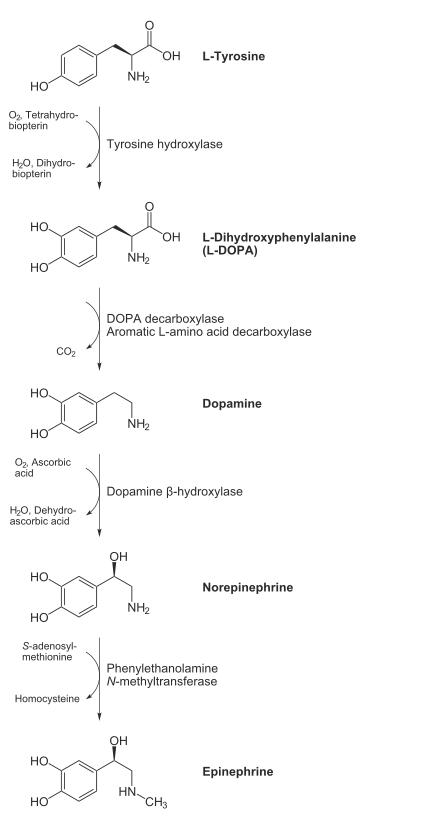BRAIN GAINS Part Two: Dopamine

BRAIN GAINS Part Two: Dopamine
Neurotransmitters are the biochemical messengers responsible for our many mental functions, such as focus, memory, mood, motivation, relaxation, socializing, and cognition. I became intrigued by the quest to “hack” said messengers almost as soon as I began learning about them in pharmacy school. As my foray into the sport of bodybuilding progressed, I recognized the crucial role my mental function was playing in the gym and the kitchen. Our bodies have limitless potential; it’s most often our weak mental game that holds our physiques back. I’m not sure why nootropics aren’t as prominent as protein powder and BCAAs in the supplement market, but that’s starting to change, so it’s high time that I share my knowledge with the MUSCLE INSIDER audience and get you educated on the basics before nootropics become the new craze.
https://nootriment.com/wp-content/uploads/2015/01/serotonin-and-dopamine-relationship-300x300.jpg from https://nootriment.com/serotonin-dopamine/
Nootropics, also known as “smart drugs,” are a class of supplements that enhance cognitive functions by boosting our neurotransmitter levels. The same way nitrous oxide precursors such as citrulline can assist in NO production to stimulate vasodilation and improve blood flow to our muscles, nootropics are often precursors to neurochemicals with equally desirable effects in the cognitive arena.
In part one of “Brain Gains,” I covered serotonin [link to serotonin article]. This time around, I’m giving you the scoop on a little molecule called dopamine. Dopamine belongs to a group of endogenous chemicals called catecholamines. Catecholamines modulate the CNS to prepare the body for physical activity. Other closely related catecholamines are norepinephrine (NE) and epinephrine (E), which are released by the adrenal glands in the fight-or-flight response. In fact, dopamine gets converted into norepinephrine, which then gets converted into epinephrine. That means that when dopamine is low, the other “fight or flight” biochemicals are probably low too.

Image from: http://www.hdri-usa.com/tests/catecholamines-in-platelets.html
Dopamine is slightly different from its catecholamine sisters, NE and E; they play a relatively more physiological role, while dopamine functions heavily in emotion and behaviour. Many folks think dopamine is the “happy” brain chemical—and they aren’t entirely wrong, because the release of dopamine certainly feels good—but dopamine is more accurately the “motivation” and “reward” neurotransmitter. Motivation and reward are vital to our survival and go back to the caveman days. We needed food, water, and sex in order for our species to survive, so each time we got them, our brains would released dopamine, a feeling so pleasurable that we became motivated to seek out the substance or behaviour that provided that feeling, over and over again. Interestingly, in the modern world we’ve evolved (or, perhaps, devolved) to chase that dopamine boost via behaviours and substances that are not mandatory for survival: cell phones, Instagram likes, cocaine, nicotine, gambling, and so on. Actually, the physiologic aspect of every addiction known to man involves the dopaminergic system.
Low levels of dopamine activity in the brain manifest as inability to focus, procrastination, short attention span, lack of motivation, sugar cravings, low energy, and anhedonia (inability to experience pleasure). Dopamine deficiency is the central biochemical culprit in attention deficit disorder (ADD/ADHD) and addiction. Some people are just wired to have lower dopamine activity than others; it’s often these people who tend to overuse substances that stimulate dopamine activity. Some of the ways we become deficient (or make pre-existing deficiencies worse) are by overusing pre-workout formulas, energy drinks, and stimulant drugs such as ephedrine, cocaine, and Adderall, not getting enough sleep, and drinking alcohol often.
The most beneficial strategies to improve dopamine function are precursor supplementation and preservation of endogenous dopamine. Supplementing with amino acid precursors such as L-phenylalanine and L-tyrosine from dietary and commercial sources ensures that your body has the building blocks it needs to synthesize dopamine; avoiding exogenous dopamine stimulation via substances such as cocaine and amphetamines (yes, Adderall is an amphetamine) preserves your existing dopamine stores. Sleep deprivation downregulates dopamine production, while meditation increases endogenous dopamine levels.
- L-tyrosine
- L-tyrosine is a staple in the nootropic community. You’ll find it in most pre-workout formulas too, and for good reason—L-tyrosine is a key precursor to dopamine, and a large body of research exists to establish both cognitive and athletic performance.
- The majority of positive research on L-tyrosine and cognition has been performed on sleep-deprived study subjects. The apparent benefits are more dramatic than with normal subjects.
- There is a related compound on the market called N-acetyl L-tyrosine (NALT), which is more heat-stable and water-soluble than L-tyrosine. In theory it sounds like a better choice, but I’m more concerned with parameters such as alertness and cognitive performance than heat and water solubility, and the research on the former has been done with L-tyrosine—not NALT. Until NALT has been studied, it’s premature to say that it’s the “better choice.”
- The major drawback of L-tyrosine supplementation is its astronomical dosage. For cognitive performance you’re looking at 100 to 300 milligrams per kilogram of body weight per day (for a 140-pound gal like myself, that’s roughly 6500 milligrams on the low end!) but you can find it in powder form and in high-potency (750 to 1000 milligrams) capsules.
- L-tyrosine is also a precursor to thyroid hormone, so those who take thyroid medication should consult with their health care practitioners before using.
- L-phenylalanine
- While phenylalanine is converted into L-tyrosine and it seems intuitive that it would be as beneficial as L-tyrosine supplementation, the research just isn’t there yet. L-phenylalanine requires lighter dosing than L-tyrosine, so if you’re going to try it, start with 50 milligrams three times daily, and titrate to 400 milligrams three times daily—this was the protocol used in a (relatively underwhelming) study on adults with ADHD.
- Rhodiola rosea
- Rhodiola rosea is a resilient herb with an incredibly diverse range of therapeutic uses. Touted as an anti-fatigue agent, it’s thought to improve stamina, energy, and mental capacity. Rhodiola belongs to a class of compounds termed “adaptogens,” substances that help the body adapt to stressful conditions.
- A number of studies have been performed looking at rhodiola’s effect on fatigue, cognition, subjective well-being, and depression, with consistently positive results.
- In addition to its suggested dopamine-boosting effects, rhodiola has been studied for improvement of athletic performance, and may increase time to exhaustion.
- The most commonly researched potency is rhodiola that is standardized to 3 percent rosavin and 1 percent salidroside. Dosages of 100 to 600 milligrams per day have all been studied and shown to be beneficial.
- Rhodiola rosea can cause dizziness (resulting from decreased blood sugar and blood pressure) and can also affect liver enzymes responsible for metabolizing prescription medications, so check with your pharmacist before use if you are taking any regular prescription medications.
- Hordenine
- Hordenine is a popular stimulatory compound found in many sports supplements; it’s structurally related to synephrine, epinephrine, and ephedrine.
- It’s thought that hordenine prevents breakdown of dopamine in the brain, but there is no human research to support this or any of the other claims recommending its use.
- Mucuna pruriens (aka cowhage, velvet bean)
- This one is especially interesting. Its seeds have been used in traditional Ayurvedic medicine to treat Parkinson’s disease (another disease characterized by dopamine deficiency). Analytical studies have shown that cowhage seeds contain around 4 percent levodopa (aka L-dopa), a pharmaceutical staple in the treatment of Parkinson’s. This information suggests that Mucuna pruriens is a legitimate dopamine precursor, and there’s even evidence to suggest that it’s beneficial in the treatment of Parkinson’s disease, but there is no formal research on its effectiveness for cognitive-related functioning. Yet another nutraceutical that sounds good in theory, but doesn’t have the evidence to back it up.
A few final points: Seek care from regulated health care professionals who are familiar with you and your medical history, and include them in your decisions to try nonprescription products. Educate yourself by using credible, unbiased resources, and always ask yourself this: “What does the person who is informing me have to gain or lose if I follow their advice?” When trying natural health supplements, seek quality products with reasonable evidence to support benefits, and use them at the dosages and durations that have been studied. As a general rule of thumb, try only one new supplement at a time—this way you know which one is responsible for its desirable (or harmful) effects. Finally, just because it doesn’t require a prescription, that doesn’t mean it’s safe! At a high enough dose, everything is a poison. Let the (brain) gains begin!
REFERENCES:
Natural Standard: Food, Herbs & Supplements. Somerville, MA: Natural Standard Corporation; [n.d.]. https://naturalmedicines.therapeuticresearch.com/databases/food,-herbs-supplements.aspx. Accessed February 2, 2017

